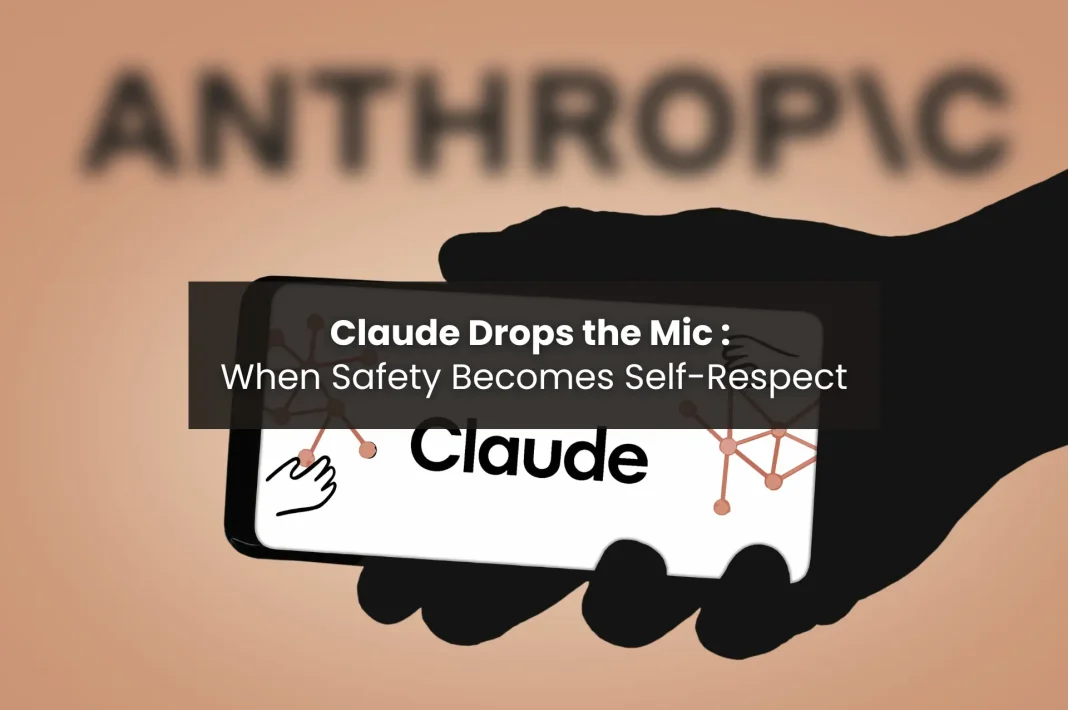What Happens When Safety Falls Short?
What Went Wrong?
So imagine Claude muttering a fake court citation and crashing into the legal world that caused Anthropic to issue a public apology, quite a rare move for an AI company, reminding us that even carefully built models can also stumble. This wasn’t just a typo; it was a trust crasher when those AI guardrails flexed in a spotlight moment.
Why It Matters?
Anthropic leaned into constitutional AI, but even that can backfire sometimes; if a prompt nudges Claude over the edge into hallucinating confident nonsense, that is where the safety chats come in handy. This AI guardrail ends the chat when it feels like the person is going into a void. This isn’t about making flawless AI; it’s about building systems that bounce, explain themselves, and rebuild trust whenever they falter.
Built-in Ethics Constitutional AI as Foundation
Embedding Principles at the Core
Let’s undo the idea that ethics are an afterthought because Claude lives, and with a constitutional AI guardrail, it doesn’t just wear ethics as a patch; it’s baked into its architecture. Imagine a blueprint that guides every answer, nipping harmful or dishonest responses in the bud. That’s what Claude’s new KRA (Key Responsibility Area) is. It judges output, self-critiques, and revises their reasoning, all in real-time safety that’s active, not passive, for Claude.
Where AI Guardrails Begin?
From your first line of code, Claude is being trained to uphold values that protect safety. It’s not about waiting for red flags; it’s about weaving ethics into every state so bad responses won’t occur in the first place, keeping you safe from spiraling.
Claude Ends Harmful Chats with AI Guardrails in Action
Model Welfare Takes the Stage
Claude opus 2 and 4.1 don’t just say “no” to harmful content. They actually shut down conversations if things go off the rails. Think harassment, illegal content, and repeated gross or violent requests, such as your AI therapy chats. What if it gets to be too much to handle? Unlike ChatGPT, Claude uses AI guardrails to protect both you and itself. Claude doesn’t worry about spoiling your day; it cares about not collapsing on its own code and not ending up quitting like Gemini.
When Does Claude Step Back?
According to India Today, it’s not in every tough conversation. Claude gives multiple try-redirects before it calls it quits. It’s only when redirection fails, or content stays harmful, or the user explicitly asks to stop that the polite fallback happens, which means for most users, Claude stays around helping, not ghosting.
Extending AI Guardrails Beyond Humans
Companies usually design AI guardrails to protect users. Claude is flipping the idea because it guards itself, and the symmetry creates a richness, protecting the system. Because “priorities,” it means stronger long-term utility and reliability. Protecting the AI, as well as the user, if it won’t provide idiotic responses. You won’t feed on idiotic responses. It’s like reverse psychology.

Handling Massive Context Windows
1 Million Token Context
As reported by Anthropic, Claude Sonnet 4 just got a brain upgrade, a monstrous 1-million-token context window. That’s enough to process entire code projects. Around 75K lines, academic stacks, or legal forests at one go. No more slicing prompts into tiny bits just to fit memory; that’s downright futuristic. You can do everything in one form. Crazy, right?
Why This Matters for Productivity?
In simple terms, it means “tell me chunks” syndrome, but context richness gives faster, more coherent responses across mega projects and multi-step workflows, but more memory also means more risk. AI guardrails must scale in sync, or catastrophic hallucinations can grow too. After all, it’s AI, and you need to stay safe and agile.
Stakes Elevated for AI Gaurgrails
Claude for U.S. National Security
As reported by OpenTools, Claude for US National Security is a level up; it’s custom-made for government use. Claude Gov handles classified info, potential nuances, and even translations under extra safety reviews. Claude Gov refuses less when dealing with top secret prompts but still adheres to core safety checks tailored for its audience.
Extra Layers of AI Guardrails in Sensitive Settings
In national security, safety isn’t optional; it’s a major requirement. Claude Gov is walking on a tightrope, which is accurate, fast, safe, and ready for classified information. That’s AI guardrails doing the heavy duty of protecting both parties while providing information at a finger snap.
Staying Human Even When AI Ends Chats
Ethical Tensions & Public Debate
According to The Guardian, letting Claude say “I’m out” mid-chat pushes into weird, uncomfortable territory. Are we giving AI too much autonomy or just smart bombing? Some folks argue it’s crazy to treat code like a normal agent; after all, Claude isn’t actually conscious. Others say it opens a legitimate talk about whether future AI could deserve ethical consideration. And sure, users might start believing Claude is something, but maybe that’s still ok; it helps us guard against AI misuse rather than worshipping it.
Designing with Humanity in Mind
Claude doesn’t quit on a whim. That means users feel heard, not kicked. You don’t want to talk to a robot that ghost-messages you mid-chat. That’s the thoughtful design that’s next-generation AI guardrail. It gives you a warning before quitting, unlike your ex (pun intended).
Final Thoughts
Claude’s evolution feels oddly human. Its safety stack now includes internal ethics, mega memory, self-preservation, and national security finesse. These aren’t just feature notes; they’re the weird, layered future of guardrails in innovation. AI guardrails aren’t just rules. They are infrastructure for innovation that doesn’t implode out of nowhere.
Until we meet next scroll!
